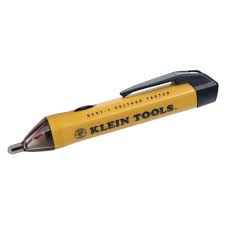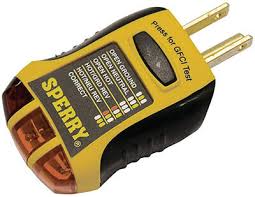The electrical system is a very important component in a home. Electrical work should always be done by a licensed and certified professional, as electrical work can be dangerous and is nothing to mess around with. Unfortunately, amateur wiring methods are found more commonly than they should be. Here are some wiring issues that are found during typical home inspections.
I highly recommend for all realtors, clients, and current home owners to purchase an outlet tester. You can pick up these plug testers at any hardware store such as Home Depot, Lowes, Menards, Harbor Freight, etc. These tools are only $8-15 dollars and can help you catch wiring issues around your home. Another useful tool is a voltage detector, also sometimes called voltage sniffers or hot sticks.
Issues to look for:
Outlets missing cover plates
Open grounded 3-prong outlets
Reverse polarity outlets (hot and neutral wires reversed)
Open junction boxes missing cover plates
Open wire splices - splices not installed in junction boxes
Loose outlets not properly fastened to wall
Any signs of burnt up or overheating wires
Damaged service entrance wires not installed in conduit
Double tapped breakers
Undersized/burnt up wires
Open slots/knockouts in main and sub panels
Wires entering boxes missing bushings
Scarred or damaged wire sheathing
Double tapped breakers
The middle photo shows an example of "double tapped breakers" or multiple wires terminated in one breaker. Although some breakers are rated and allowed to have double tapped breakers, these breakers are not. Over time as current and heat flow through the wires, the wires will become loose, overheat, and begin to arc from the poor connection creating a safety hazard and even a fire hazard. Its common to find when a homeowner add a new line in and might not have room in the panel. This issue should always be addressed.
Open knockouts or slots in panels
Open slots or knockouts in the panel should always be covered with blank inserts for a couple reasons. It leaves openings exposing live wires in the panel and creates a dangerous shock hazard if anyone were to put there hand in these open slots. Also when open knockouts are not used, or bushings not installed; it creates an opening for pest to enter the panel and interrupt the system or bees and wasps to create nests inside the panel. Very cheap and easy fix to prevent any possible issues.
Damaged service entrance wires
It is common to find with older homes that the overhead service entrance wires are not installed in proper conduit and are just SE cables. Over time the sun's UV rays put ware and tear on the wire sheathing and begins to become brittle, flake off, and expose the live wires. Not only can this pose a potential shock hazard, but now the wires are even more prone to damage being exposed to the elements. It is recommended to always install the service entrance wires in metal conduit to prevent any possible issues.
Open wire splices and junction boxes
A very common issue found in attics and crawlspaces. All wire splices or "connections" need to be installed electrical rated junction boxes with cover plates. Over time wires can become loose, overheat, and begin to arc and without the cover plates or junction boxes wires are exposed and can arc near all the flammable/combustible materials and create a fire hazard. The middle picture is a prime example of an open wire splice that was buried in insulation. You can see the obvious signs of overheating and the insulation was creating more heat itself. It looks like this was caught just in time before a fire.
Issues with outlets/plugs
Here is where that plug tester can come in handy. It allows you to find issues with outlets that you may never know about. You can find open ground 3-prong outlets, missing neutral wires, reverse polarity, and GFCI outlets that are not wired correctly and may not trip properly like they should. All these issues create possible shocking hazards. Missing cover plates and damp proof/water proof are simple cheap fixes but should be addressed for obvious reasons. Exposed wiring poses a shock hazard, especially if any young children are in the home who might get curious and stick there fingers in the outlet. Water and electricity do not mix well so adding the proper covers should absolutely be installed.
Undersized and overheated wires
The size of the wire should depend on the amount of amps that appliance will use and the size of the breaker being used. For example, 20 amp breakers require a minimum of 12 gauge copper wire, 30 amp requires 10 gauge wire, 40 amp requires 8 gauge wire, and so on. If the wire is larger than the minimum required, no issue at all. Although if the wire is undersized, you pose the risk of the wire overheating before that certain size breaker will trip and can also pose a fire hazard and wire sheathing begin to melt.
Here are a couple examples of burnt up/melting wire. The neutral wire on the left is likely from poor termination into the screw and arcing from poor connection, causing it to overheat.
If you found this information useful please like, follow, and/or share. Electrical work is nothing to mess around with so always hire a licensed and experienced electrician to do the work the correct way.
#tuscaloosarealestate #homeinspector #homeinspections #alabamahomeinspector #tuscaloosaalabama #tuscaloosahomeinspector






























Comments